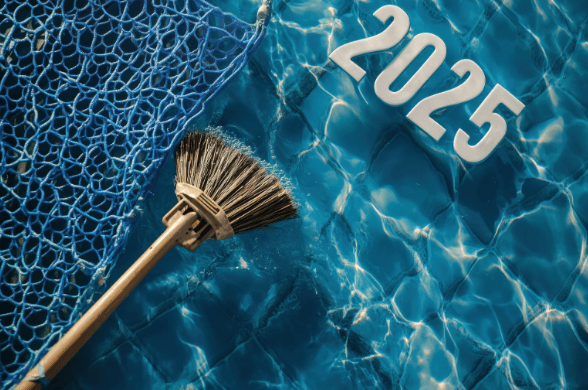Keep Your Pool Sparkling with the Right Cleaning Routine

A well-maintained pool doesn’t just look good—it feels better to swim in and is healthier overall. If you’ve ever dealt with cloudy water, floating leaves, or gritty sediment at the bottom, you know how quickly debris can take over. That’s where a Large Pond Hoover becomes your pool’s best friend.
Whether you own an above-ground pool or a built-in structure, understanding the right tools and methods can change the way you handle routine cleaning. Let’s explore how to use this essential tool to its full potential.
What Makes a Large Pond Hoover Unique?
Unlike automatic pool vacuums or robotic cleaners, a Large Pond Hoover gives you direct control. It allows you to thoroughly remove stubborn debris from your pool floor and walls—places that automated cleaners might miss. Designed for precision, it’s ideal for deep cleaning tasks, especially after storms or long periods of pool inactivity.
Key Parts of a Large Pond Hoover
- Extendable Handle: Reaches across the pool easily for full coverage.
- Weighted Vacuum Head: Sits securely on the pool floor and scrubs debris loose.
- Flexible Hose: Connects to your pool’s filtration system and enables powerful suction.
- Vacuum Plate (Skim Vac): Connects the hose to the skimmer inlet securely.
Each component plays a vital role in making the cleaning process more efficient and less time-consuming.
Assemble Your Cleaning Toolkit
Before starting your cleaning session, gather the following tools to ensure smooth operation:
- Vacuum Head: Choose a model suited to your pool’s surface type—soft brushes for vinyl, wheels for concrete.
- Telescopic Pole: Should extend long enough to cover your entire pool.
- Vacuum Hose: Ensure it’s long enough to reach from the vacuum head to the skimmer.
- Vacuum Plate: Also known as a skimmer plate, this component connects the hose to the skimmer system.
Having the right setup means better results and fewer interruptions.
Picking the Best Hoover for Your Pool Type
Different pool surfaces require different kinds of vacuum heads. Here’s what to consider:
- For Vinyl Liners: Use soft-bristled heads to prevent accidental punctures.
- For Concrete or Gunite Pools: Opt for rolling heads with durable bristles for more aggressive cleaning.
- For Above-Ground Pools: Look for lightweight models that are easy to maneuver in shallower spaces.
Always match your Large Pond Hoover to your pool’s specific needs for the best performance.
Cleaning Routine: Step-by-Step with a Large Pond Hoover
Ready to put your cleaning gear to work? Follow this simple process to get your pool crystal clear.
Step 1: Set Up Your Equipment
Attach the vacuum head to the telescopic pole. Make sure it’s secure, as a loose connection can make cleaning more difficult.
Step 2: Connect the Hose
One end of the hose goes to the vacuum head. The other end connects to your skimmer through the vacuum plate. Make sure your skimmer basket is removed before this step.
Tip: Hold the hose against a pool jet until all bubbles disappear. This removes air from the line and ensures proper suction.
Step 3: Choose Your Filter Setting
Your pool system may have multiple settings like Filter, Waste, or Backwash.
- Use Filter for routine cleaning.
- Use Waste for heavy debris removal—but keep a garden hose nearby to refill lost water.
Step 4: Begin Cleaning
Push the Large Pond Hoover slowly across the pool floor. Overlap your strokes slightly to avoid missing debris. Move methodically from shallow to deep end, or vice versa.
Avoid quick movements—they stir debris, making it harder to remove.
Step 5: Wrap Up and Rinse
Once done, disconnect all parts and rinse them clean. Don’t forget to return your pool settings to normal and replace the skimmer basket.
Pro Tip: Test and balance your pool water after vacuuming. It’s a great time to make sure chemical levels are in check.
Why Manual Hoovering Still Matters
Even if you use a robotic cleaner regularly, there are moments when manual cleaning is more effective. A Large Pond Hoover allows you to reach pool corners, stairs, and crevices that automatic models often ignore.
Heavy leaf fall? Storm aftermath? Algae patches starting to form? Manual hoovering provides the precision needed for these challenges.
Caring for Your Equipment
Proper maintenance of your Large Pond Hoover ensures it lasts longer and works more efficiently.
- Rinse the hose and vacuum head after each use.
- Store the telescopic pole in a dry area to avoid rust or damage.
- Regularly inspect for cracks or wear on the vacuum head and hose.
Simple care routines can save you from mid-season breakdowns or costly replacements.
When and How Often Should You Use It?
A weekly cleaning schedule is ideal for most residential pools. However, after heavy use, storms, or periods of neglect, a deeper clean using the Large Pond Hoover may be necessary.
Quick checks after high winds or parties can help you decide when a full clean is needed.
Clearing Up Confusion
Can I Use a Large Pond Hoover in an Above-Ground Pool?
Yes, just make sure to use a lightweight vacuum head and hose designed for smaller, less deep pools.
Is Manual Cleaning Better Than Robotic Options?
Robotic cleaners are great for regular upkeep. But for deep, focused cleaning or heavy debris, manual vacuuming offers better results.
Will Vacuuming Lower My Water Level?
If you use the “Waste” setting on your filter, yes—it bypasses filtration and removes water. Keep a hose running to refill as needed.
Can I Use the Hoover on Pool Steps?
Absolutely. Just make sure to use a soft-bristled head to avoid damage to delicate areas.
Does Vacuuming Affect My Pool’s Chemical Balance?
Indirectly, yes. By removing debris, you reduce contaminants and help maintain chemical stability. It’s good practice to test water after a vacuum session.
Final Thoughts
A Large Pond Hoover offers a hands-on approach to maintaining a clean, inviting pool. While it takes more effort than automated systems, the results are often more satisfying and more complete. You’ll notice improved clarity, better chemical balance, and less strain on your pool filter system.
It’s more than just a cleaning tool—it’s a maintenance essential that gives you full control over the health of your swimming area. With regular use, it becomes second nature and can even be a peaceful, productive part of your pool care routine.
So grab your gear, schedule your cleanings, and enjoy crystal-clear water all season long.





